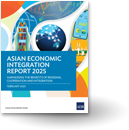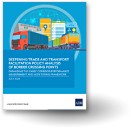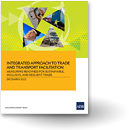How can the changing trade landscape reshape global imbalances?
The term “fair trade” was originally coined for a social movement – to allow producers and workers in developing, exporting countries to compete on a level playing field with developed, importing countries in terms of pricing power. The idea is that buying products from developing countries at fair prices can support sustainable development better than through simple grants or aid.
Today we hear a lot about fair trade, but in an entirely different context. Now, policy makers in advanced countries—especially the US—are repositioning trade policies to ensure that free trade is also fair trade.
But here the term “fair” implies something very different. It cites uneven bilateral trade results, criticizing a country that benefits at the expense of the other.
Those railing against “unfair” trade use easy benchmarks like bilateral trade deficits, or probable job losses due to an influx of competitively priced imports to justify erecting trade barriers. They threaten “solutions” for trade imbalances via tariffs or other measures designed to substitute imports with domestically produced goods.
On the other hand, “reciprocal trade” seems to be focused more on ways a country can restore fair trade by adjusting trade barriers proportionate to what the level other trade partners have at the same time.
Since the flip side of a country’s current account deficit (the majority of which is usually the trade deficit) is excess national investments over national savings at the macroeconomic level, the pursuit of fair and reciprocal trade will likely result in a decline of the overall international trade volume as well as worldwide consumption. This, in turn, will certainly hurt the prospects for sustained, synchronized global economic growth.
Some trade policies being repositioned to ensure free trade is also fair
Until the domestic production capacity a of reciprocity-pursuing country expands enough to overcome persistent cost and efficiency disadvantages, manufacturers that rely on cheap imported intermediate goods and consumers who purchase imported final goods will suffer. Moreover, boosting the domestic manufacturing production base will take a long time and strenuous effort – far beyond what immediate reciprocity promotion measures can accomplish.
One encouraging aspect of this phenomenon, though, is that we may finally be able to achieve progress on addressing global imbalances.
Global imbalances have appeared when advanced economies’ current account deficits have been coupled with commensurate surpluses in emerging—in particular Asian—economies, resulting to yawning foreign liabilities of advanced economies that were largely covered through an accumulation of financial assets by emerging economies. Unwinding these global imbalances, which is long overdue, would mean for instance that the US fiscal deficit—forecast to increase due to the massive tax reform and probable expansion of infrastructure spending—will have to be financed more with domestic resources than from abroad.
Depending upon the strength of the domestic investment base, US interest rates, which move opposite to the bond price, might jump. This will also have implications for the affordability and economics of debt financing for the private sector.
The potential impact on the exchange rate cannot be underestimated either. A weaker dollar could boost the export competitiveness of US exports, but growing inflationary pressure pursuant to higher costs for imports would put the Federal Reserve in the hot seat.
The world economy is entering uncharted waters, mainly driven by the reshaping of the international trade policy environment. The jury is out on whether these unfolding changes are good or bad for the global economy, as well as for individual economies.
Asia must bolster domestic demand base against trade imbalances
What’s more important, however, is the harsh reality that such a big shift always requires prudence and patience to allow smooth adjustment procedures, both domestically and across the globe. Spinning the wheel hastily can break the axle, and the remedy can be worse than the illness.
How should Asia adjust to these changes? In the future, once the global imbalances begin to unwind, many Asian countries may not continue to accumulate trade surpluses or foreign financial assets as the same rate as now.
Potential trade frictions may also presage a bumpy road ahead in this adjustment process. For all the uncertainties surrounding the direction of the rebalancing forces, one fairly certain future path is that external demand will likely lose some steam as a growth driver for many Asian countries.
So, what needs to be done?
Dealing with potential trade frictions is one thing, but wisely handling the economic adjustment is another. In order to cope with this upcoming challenge, Asian countries need to broaden and deepen their domestic demand base.
Policy efforts to strengthen domestic consumption and investment will become increasingly important for Asian countries as they look for growth drivers more from inside rather than outside to maintain growth momentum. Containing widening income disparities and developing the lagging services sector should certainly receive the highest priority.
Original article was published at the ADB Blog and duplicated here with permission from the author. *




